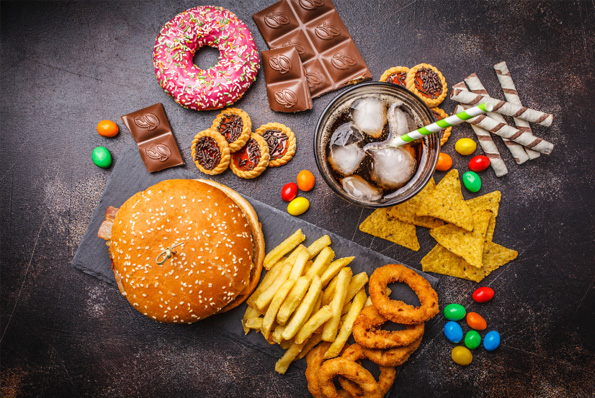Ultra-processed foods and health

Fast food, pre-packaged microwave dinners, instant ramen might be tasty and convenient, but over-consumption of such “ultra-processed” foods is known to be detrimental to your health.
To be clear, most foods are processed to a certain extent for safety and other purposes. Foods that have been canned, frozen, chopped, pasteurized, or dehydrated are all technically “processed” according to the US Department of Agriculture. This isn’t quite the same as “ultra-processed” foods with long lists of ingredients that are effectively unrecognizable to the layperson.
The NOVA food classification system developed by researchers at the University of San Paolo divides processed foods into four groups for easy reference:
Group 1: Unprocessed or minimally processed foods
Fresh foods that have had inedible/unwanted parts like seeds and stems removed. Foods that have been processed using only basic preservation and safety techniques such as freezing, drying, and pasteurization to make them more edible or suitable for storage would fit into this category.
Group 2: Processed culinary ingredients
These would include culinary ingredients like oils, butter, sugar, and salt derived from Group 1 foods or nature, using processes including pressing, refining, grinding, milling, and drying to increase longevity. Such ingredients are not intended to be consumed by themselves, and are normally combined with Group 1 foods to make drinks, dishes, and meals.
Group 3: Processed foods
Foods that basically combine Group 1 and Group 2, such as canned meat, cheese, fresh bread, preserved vegetables would fall into this category. Generally speaking, such processed foods may have 2-3 primary ingredients are still recognizable as modified versions of Group 1 foods. The effect of processing is essentially to increase the longevity and taste of Group 1 foods.
Group 4: Ultra-processed food/drink products
Formulations made mostly or entirely from substances derived from foods and additives (with little if any intact Group 1 food), such as soft drinks, sweet/salty packaged snacks, reconstituted meat products, etc. would not be considered “modified” foods, but “ultra-processed”. Typically speaking, the purpose of such ultra-processing is to create consistent, branded, convenient, tasty, profitable food products.
Why are ultra-processed foods unhealthy?
More often than not, ultra-processed foods contain excessive sugar, sodium, artificial ingredients, and preservatives. Of course, if your overall diet is generally healthy, with nutrient-rich minimally processed foods and lots of fruits and vegetables, indulging in an occasional pizza won’t hurt you. Unfortunately, that oftentimes isn’t the case - due to artificial flavoring, ultra-processed foods are typically particularly addictive and delicious, making it easy to overeat, increasing calorie intake and weight gain.
Generally speaking, it is better if your diet is comprised mostly of unprocessed or minimally processed food products, such as those with relatively short ingredient lists, or fruits and vegetables in their most natural form (and in frozen form if otherwise unavailable). As they say, “abs are built in the kitchen”!